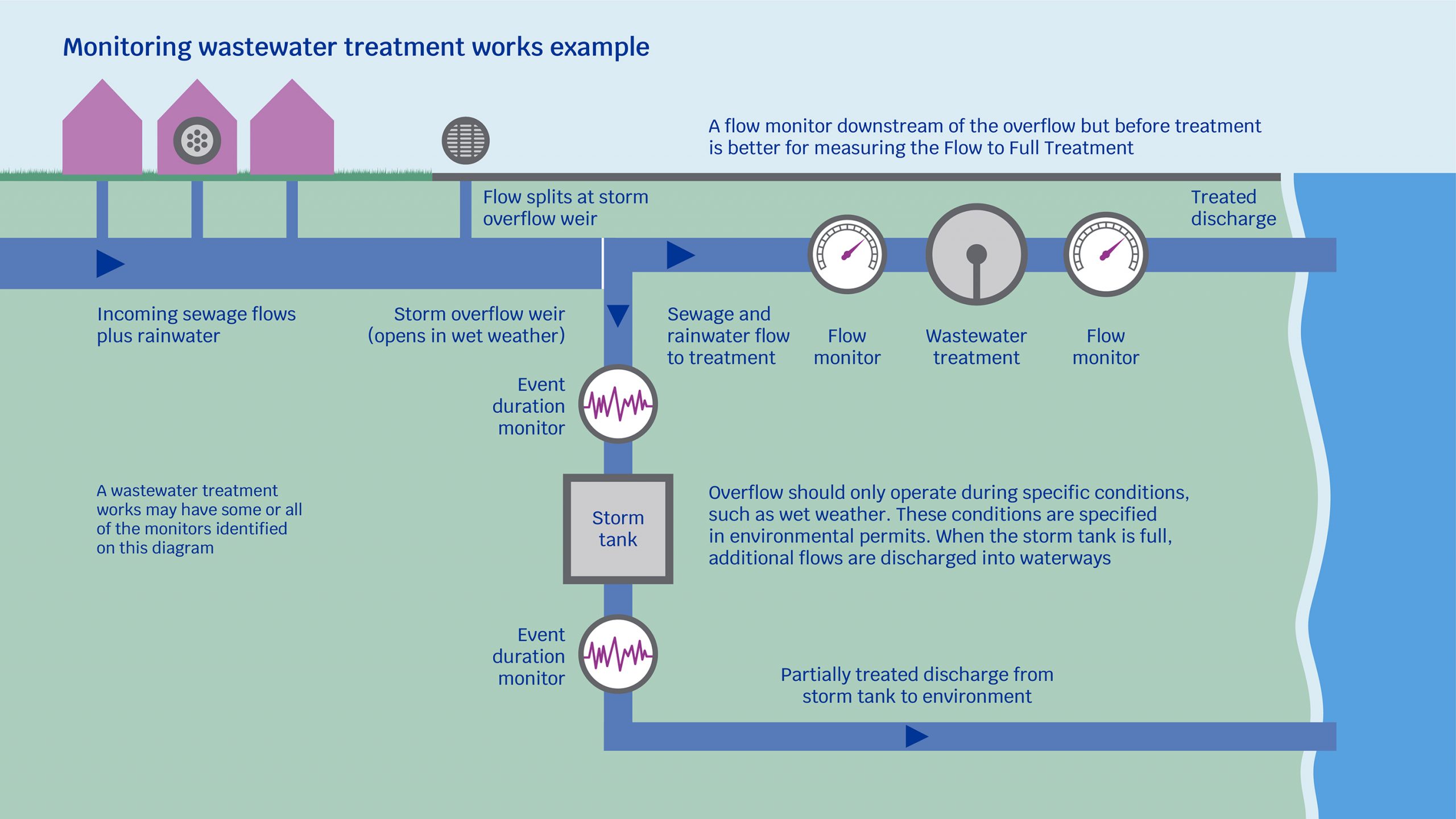What is FFT and why are you investigating?
Flow to Full Treatment, often referred to as FFT for short, is a measure of how much wastewater a treatment works must be able to treat at any time.
All wastewater treatment works are built to be able to deal with a certain amount of wastewater, calculated depending on the area they serve and many have a requirement in their environmental permit about the FFT level they must work to.
If the amount of wastewater going to the works is more than the FFT level, for example if there is a storm and heavy rain, then the environmental permit for the treatment works will normally allow the extra amount coming into the works to be diverted to storm tanks (where the works has them), until the storm passes. The contents of these storm tanks can then be returned to be treated by the works.
If the storm is prolonged or sustained, then the environmental permit will allow the water company to release the extra incoming rainwater and diluted wastewater into the environment, normally after partial treatment.
If a water company is diverting this rain and wastewater to storm tanks or the environment before reaching the works’ FFT level, they could be breaking the conditions of their environmental permit.
New monitoring equipment which is currently being installed at over 2,200 wastewater treatment works in England has prompted several water companies to say that they could be releasing sewage from their wastewater treatment works when they do not have permission to do so. As a result, Ofwat and the Environment Agency have both launched investigations.
